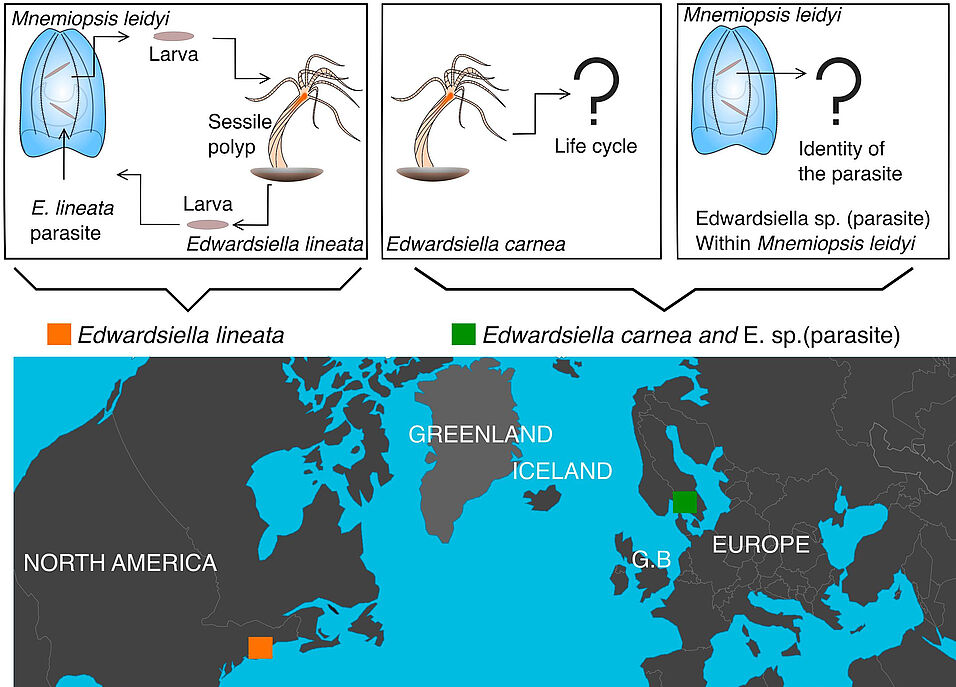How dispersal strategies impact the distribution of species and subsequent speciation events is a
fundamental question in evolutionary biology. Sedentary benthic marine organisms, such as corals or sea anemones usually rely on motile larval stages for dispersal and therefore have a relatively restricted distribution along coasts. Edwardsiella lineata and Edwardsiella carnea are virtually indistinguishable edwardsiid sea anemones native to the east American and the Northern European coast, respectively. E. lineata is a facultative parasite to the ctenophore Mnemiopsis leidyi, while the life cycle of E. carnea is unknown. Recently M. leidyi was found in the Skagerrak carrying Edwardsiella sp. parasites, which raised the intriguing possibility that the invasive comb jellies acted as cargo for the facultative E. lineata parasites to establish a new population in Northern Europe. Here, we assessed the genetic differences between these two cryptic Edwardsiella species and isolated parasites from the invasive comb jelly M. leidyi in Sweden by comparing rRNA, whole transcriptomes, SNPs, ITS2 sequences and the gene complements of key developmental regulators, the Wnt gene family. We show that E. carnea and the parasite transcriptomes are more than 99% identical, hence demonstrating that E. carnea has a previously unknown parasitic life stage. ITS2 sequence analysis of E. carnea and E. lineata suggest that they may not be reproductively isolated. The transcriptomes of E. lineata and E. carnea are ∼97% identical. We also estimate that the species diverged between 18.7 and 21.6 million years ago.
New Paper
30.04.2018

